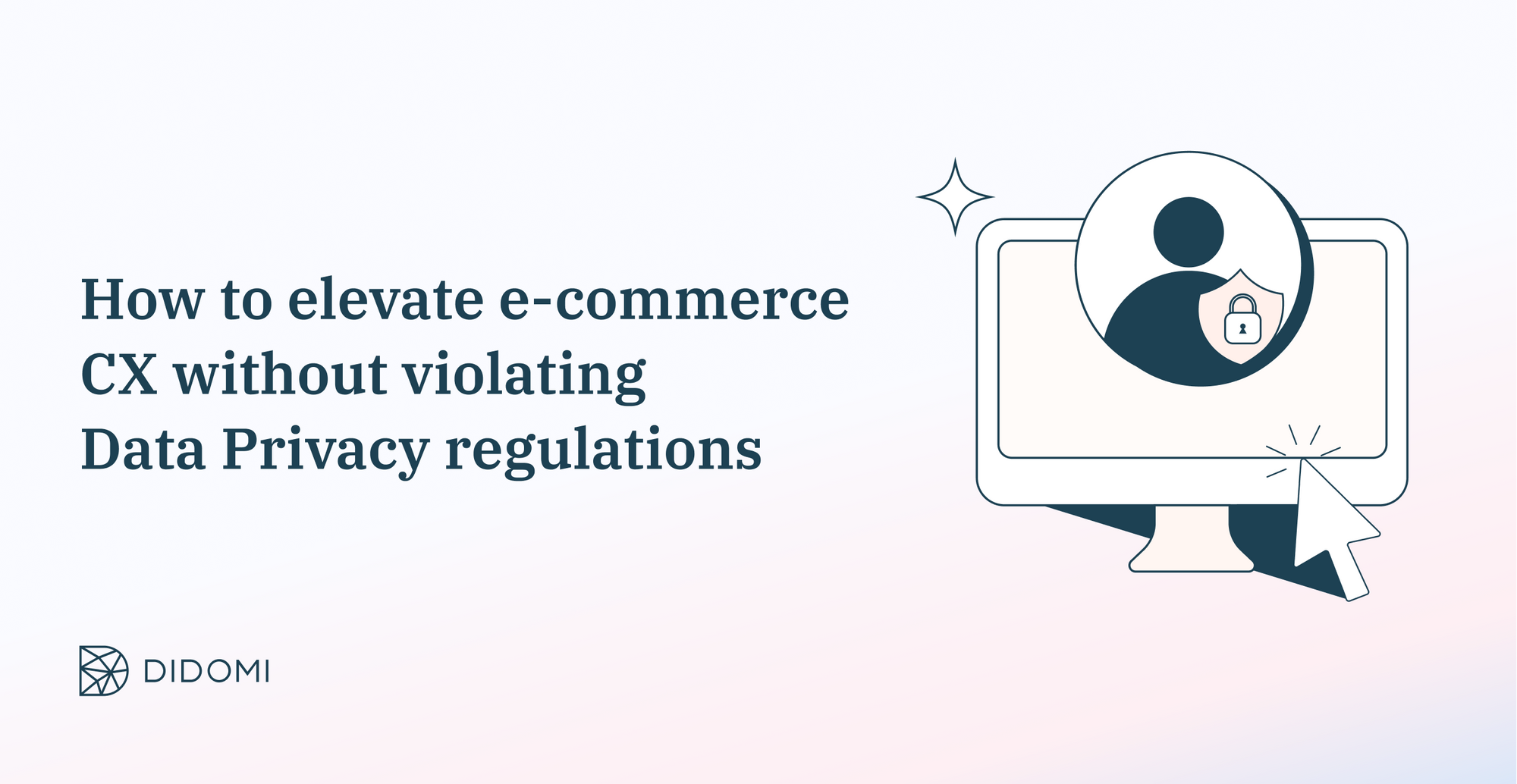Retail media is a double-edged sword in a privacy-first world. On the one hand, it is a promising new revenue opportunity that leverages what retailers, by default, can already access. On the other hand, it is also a potential threat to consumer privacy and reputational and regulatory risk for the retailer and advertisers.
Here’s how retailers can monetize their consumer data and improve profitability while mitigating potential reputational and regulatory risks.
Summary:
-
Why is retail media an attractive proposition for advertisers?
-
Despite the opportunity, retail media is a double-edged sword
-
Creating sustainable retail media revenue: key considerations for retailers
-
Retail media done right can be a win-win option for advertisers, retailers, and customers
What is retail media, and why is it a great opportunity?

Retail media is the term used for advertising and media inventory offered by retailers to brands, on their own online and offline properties. This can include advertising on digital properties such as websites and apps, as well as in-store (offline) spaces. In essence, the retailer monetizes their first-party shopper data by sharing insights and data with advertisers to design more targeted and contextual campaigns.
Retail media is a fast-growing advertising opportunity for brands, and a new and significant revenue source for retailers who have spent years building up a loyal base of customers that engage regularly across online and offline channels.
The Boston Consulting Group predicts the retail media market in North America alone will grow by 25% per year to $100 billion over the next five years and will account for over 25% of total digital media spending by 2026.
The larger pool of ‘commerce media’, which encapsulates any brand that offers other complementary brands the opportunity to communicate with their customers, is set to add another $10 billion to this pool over the next five years. This growth will take shape as the idea of retail media expands to other customer-facing industries such as auto and travel.
Why is retail media gaining ground with retailers?
Retail media is a great opportunity for retailers for several reasons:
It builds upon existing retailer strengths
The retailer can - and does - collect, access, and leverage a powerhouse of insights about user behavior from the customer’s digital footprint: browsing and buying behavior, social media interactions, email exchanges, and more.
Collecting first-party shopper data is intrinsic to retailing, so monetizing that data seems like a natural next step.
It is profitable
Retailers have access to exclusive first-party shopper data, which is more reliable than publisher advertising data because it is directly connected to the shopper's intent and actions.
This means retailers can charge a premium from advertisers wanting to target audiences based on insights and behavioral and preference data and drive up revenues.
It aligns well with a retailer’s strategic goals
Using retail media well can create a virtuous cycle - when retailers enable complementary brands to advertise on their properties, customers get a better shopping experience with more relevant, contextual, and timely product ads.
That in turn keeps the retail site more relevant and sticky for shoppers, as it becomes increasingly customer-centric.
Why is retail media an attractive proposition for advertisers?
For advertisers, retail media is a fantastic new targeted and contextual advertising opportunity, especially in the face of a future without third-party cookies. The reasons for this include:
-
It is a contextual advertising opportunity when shoppers are in a shopping mindset
-
It is based on superior first-party shopper data which allows advertisers to be as relevant and timely as possible. Not only does this mean more effectiveness in terms of conversions, but also more efficiency in terms of advertising dollars and ROI.
-
In a world without third-party cookies, it offers advertisers viable reach, targeting, and retargeting opportunities, wherever customers prefer to engage online or offline.
-
It offers a stronger link between advertising and its outcomes and allows brands to build more performance-based campaigns and budgets.
Despite the opportunity, retail media is a double-edged sword
The very element that makes retail media so attractive - the use of existing first-party shopper data to inform and design more compelling advertising campaigns - is also its most vulnerable aspect.
Retailers may have default access to a wealth of data, but that does not mean they can actually use that data for marketing or advertising purposes as they please.
As many marketers and brands have learned the hard way in an increasingly privacy-first business and regulatory environment, collecting and sharing customer data for any purpose can be a minefield when not done right.
Advertising and marketing messages, no matter how relevant or timely, may make customers feel like:
-
Their data has been collected without adequate disclosure or compliance
-
Their data has been sold to a third-party advertiser without consent, awareness, or appropriate anonymization
-
The shopping or website experience is being compromised due to too many ads, or irrelevant ads in case they have not explicitly shared their preferences
The retailer too is vulnerable in multiple ways, including:
-
Unwittingly breaching some data sharing regulations or collecting and sharing personal data without explicit consent - especially if the retailer is part of a larger retail media network or operates across multiple geographies
-
Not being able to respond adequately to Data Subject Access Requests (DSAR) from customers
-
Not being able to keep abreast of evolving privacy laws and regulations across geographies or respond to them in a proactive manner
In the rush to leverage the undoubtedly golden opportunity that retail media promises, brands could overlook the data compliance and regulatory aspects that would ultimately govern such an opportunity.
But promising as retail media seems for both retailers and advertisers, a weak privacy foundation can derail both revenue and reputation.
Creating a sustainable revenue opportunity with retail media: key considerations for retailers
While the retail media opportunity is real, retailers need to build a robust and compliant retail media offering that can stay the course in an evolving privacy-first world.
Here are 4 ways for retailers to ensure that their retail media offering is not only sustainable but also a risk-free source of revenue.

1) Build retail media around the core CX-first strategy
Retail media cannot succeed or sustain in isolation from the customer-centric experience. From the start, retailers should design and build retail media workflows and processes keeping privacy, consent, and preference at their core.
Not only will this keep the retailer compliant, but it will also win the customers’ respect and loyalty with truly transparent user experiences, and minimize any possible vulnerabilities when it comes to collecting, storing, or sharing customer data. This approach helps retailers find and keep the balance between privacy, relevance, and experience across tens, and even hundreds of online and offline touchpoints.
2) Invest in technology to enable the privacy-first CX approach
When it comes to building strong zero- and first-party data, technology can be the retailer’s greatest ally. Consent management platforms (CMPs) and preference management platforms (PMPs) are key to making the gathering, storage, and instant updation of consent and preferences across all digital and physical channels and devices effortless, centralized, and scalable.
For advertisers, the deployment of a preference management platform not only indicates that customers are sharing their preferences more proactively, but that the data and insights are more accurate and will yield better revenue outcomes.
By integrating the CMP and PMP with existing platforms on the marketing stack such as marketing automation, email marketing, or social media platforms, retailers can further leverage these known preferences to drive optimal campaign relevance, and ultimately revenue.
3) Invest in technology for a good advertiser experience
However attractive advertisers find the retail media opportunity, they will be justifiably cautious and will expect the retailer to make all guarantees of compliance and consent before investing their advertising dollars.
For retailers who want advertisers to use the retail media channel with confidence, investments in a robust CMP and PMP, as well as data clean rooms to store aggregated and anonymized advertising data, are must-have foundational technologies.
Beyond that, retailers should also invest in an enabling technology ecosystem, including:
-
A retail media ad exchange that enables transparency in viewing and buying ad inventory
-
A self-service programmatic platform that lets advertisers be more proactive, in control, and responsive with segment selection and hyper-targeting
-
Reliable and in-depth reporting and closed-loop measurement tools
-
Data protection and system security to guard against data breaches
Technology will be a core part of the data infrastructure as retail media grows, bringing down operational costs, and driving scale, advertiser preference, and profitability over time.
4) Stay ahead of the laws and regulations in markets of operation
Data privacy and compliance is a complex and constantly evolving subject and is especially challenging for businesses that operate in multiple geographies.
Despite the complexity, not staying on top of it can lead to serious fines and regulatory action.
Retailers and advertisers can both stay ahead of the privacy and compliance curve with the data privacy barometer - a great resource that lays out, visually, which data laws are approved, enforced, or still in the draft stage, as well as a host of related compliance and consent related stats and insights from over 14 industries and most countries in Europe, the Americas, ANZ and Africa.
Retail media done right can be a win-win option for advertisers, retailers, and customers
The effects of a healthy and sustainable retail media industry will be far-reaching and long-term, disrupting not only the traditional digital advertising ecosystem but also further transforming the possibilities in the constantly evolving retail industry.
While large retailers do enjoy the competitive advantage of scale and bigger budgets, even smaller retailers can punch above their weight by deploying robust compliance and preference solutions and leveraging the retail media revenue opportunity in their own niches.
In fact, long-tail niche shopping sites may often be able to offer more customization and contextualization opportunities to advertisers, even as they provide more personalized experiences to their customers.
Irrespective of size, any time data is moved or shared between companies, in any form, it is a significant risk to all parties, and retail media is no different. The secret to success will lie with those who see the value of investing in a strong data privacy, compliance, and preference management foundation from the get-go.









